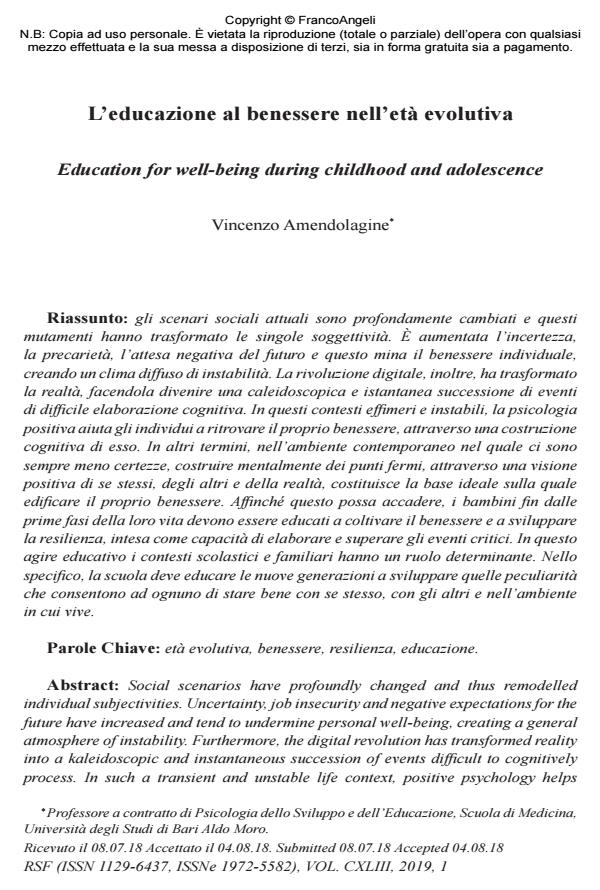Education for well-being during childhood and adolescence
Journal title RIVISTA SPERIMENTALE DI FRENIATRIA
Author/s Vincenzo Amendolagine
Publishing Year 2019 Issue 2019/1
Language Italian Pages 13 P. 59-71 File size 1895 KB
DOI 10.3280/RSF2019-001004
DOI is like a bar code for intellectual property: to have more infomation
click here
Below, you can see the article first page
If you want to buy this article in PDF format, you can do it, following the instructions to buy download credits

FrancoAngeli is member of Publishers International Linking Association, Inc (PILA), a not-for-profit association which run the CrossRef service enabling links to and from online scholarly content.
Social scenarios have profoundly changed and thus remodelled individual subjectivities. Uncertainty, job insecurity and negative expectations for the future have increased and tend to undermine personal well-being, creating a general atmosphere of instability. Furthermore, the digital revolution has transformed reality into a kaleidoscopic and instantaneous succession of events difficult to cognitively process. In such a transient and unstable life context, positive psychology helps individuals to regain personal well-being, through a cognitive approach. In other words, in the contemporary world, where certainties are few, to mentally build fixed points of reference - through a positive vision of oneself, others and reality - constitutes an ideal basis to build a personal feeling of well-being. In order for this to happen, children from the early stages of their life should be educated to cultivate well-being and develop resilience, i.e. an ability to successfully cope with difficult or challenging life experiences. In this educational approach school and family play a decisive role. To be more specific, the school should educate the new generations to develop the necessary qualities to promote personal well-being in relation to others and life context.
Keywords: Childhood and adolescence, well-being, resilience, education
- Montagnaterapia e dipendenze patologiche Livio Picchetto, Francesca Sireci, Gloria Bizzarri, Valentina Moretti, Paolo Di Benedetto, in RIVISTA SPERIMENTALE DI FRENIATRIA 3/2025 pp.27
DOI: 10.3280/RSF2025-003003
Vincenzo Amendolagine, L’educazione al benessere nell’età evolutiva in "RIVISTA SPERIMENTALE DI FRENIATRIA" 1/2019, pp 59-71, DOI: 10.3280/RSF2019-001004